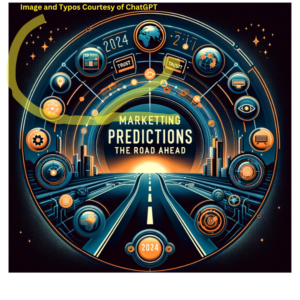Sales leaders are facing a tough reality. Revenue expectations are high, prospects are overwhelmed and it’s harder than ever to get their attention. How do you stand out? To get some perspective, we reviewed the research and interviewed 1/2 dozen revenue leaders. The consensus: while AI tools have made it easier to create content and streamline processes, relying too heavily on automation can lead to generic, impersonal outreach. Sales teams that truly break through are the ones that offer prospects something more — genuine insights, practical value, and solutions to their most pressing problems.
That’s where thought leadership comes in. It’s not just a value add. It’s a revenue driving initiative with clear, data-backed impact. Studies like the Edelman-LinkedIn 2024 B2B Thought Leadership Impact Report show a direct correlation between high-quality thought leadership content and improved sales outcomes. Consider these findings….
Increased Engagement and Receptiveness: 86% of decision-makers are more likely to engage with a company’s sales or marketing efforts if they consistently produce thought-provoking, high-quality content. In a cluttered environment, thought leadership helps you breaks through the noise.
Invitations to RFPs: 60% of decision-makers say they’re more likely to invite a company to participate in an RFP process if they have strong thought leadership content. Demonstrating expertise and sharing insights opens the door to substantial opportunities.
Long-Term Trust and Premium Pricing: 23% of decision-makers are more willing to pay a premium to work with a company that demonstrates deep expertise.
The View from the C-Suite
“True thought leadership transcends mere expertise,” according to Daniel Harrison, GM of VideoElephant and prior CRO of multiple B2B companies. “It’s demonstrating a commitment to solving critical challenges that drive real value. By defining the issues and offering genuine solutions — it establishes authority, mitigates perceived risks, and strengthens an individual and company’s network of trusted connections. In today’s content-saturated world, succinct, value-driven insights from credible sources are the currency of influence.”
Cache Merrill, Founder of Zibtek, puts it this way: “providing deep experiences or viewpoints about a certain industry allows us to solicit the trust of a potential client. Sharing industry-specific insights elevates your organization from a mere vendor to a trusted advisor who deeply understands the unique challenges of C-suite clients.” By integrating thought leadership with value-based selling, revenue leaders can sharpen their team’s strategic focus and stand out vs. competitors in a saturated market.
Meghan Anzelc, Founder and CEO of Three Arc Advisory, agrees. “Using thought leadership content to add value and insights to prospects in the sales process can be an effective approach,” she says. “When done effectively, prospects feel better informed, and you begin earning their trust.”
AI Increases Efficiency but Be Careful with Content
AI is helping sales teams scale their outreach and speed up prospect research, but using AI for content creation requires particular oversight. Revenue leaders are realizing that while it’s easy for AI to create content, quality and depth cannot be sacrificed. Andres Lares, Managing Partner at Shapiro Negotiations Institute, warns “AI can generate content with confidence, even when the information is inaccurate or misleading, so it must always be checked for accuracy.” For senior sales teams, AI should be used to augment — not replace — expertise. AI should not be a substitute for the human intuition and personalization that drive results in high-stakes B2B engagements.
Chris Harrop, Chief Revenue Officer (CRO) & Board member of Salsa Digital, emphasizes that “relying too heavily on AI can result in generic content that fails to engage prospects on a personal level, diminishing the effectiveness of the sales approach.” To reach strategic prospects, especially those in complex B2B sectors, senior sales teams must integrate thoughtful, nuanced personalization into every interaction. Anzelc emphasizes the importance of uniqueness. “If your content looks like everyone else’s, it will get lost in the noise.”
Curation vs. Original Content: Find a Balance
It can help to occasionally share thought leadership from other companies, which will show your higher level thinking, but doing so requires caution since that content may reference your competitors. Curation takes time but is a reasonable request for your marketing team. There’s only so many times you can cite content from third parties with a prospect, however. It’s better if your company authors the content directly so it will be “pre-vetted” and tie to your value proposition. Doing so will also position your company as the source of authority.
How to Weave Thought Leadership into Sales Motions
Here are some practical ways sales teams can go about it.
1. Elevate Cold Outreach
How to Use It: Use thought leadership as a way to begin a relationship by sharing some insights. Instead of leading with benefits or product details, open with observations about the market, research findings or other information that adds value.
Example: For a healthcare prospect, send an email with the subject line, “New Research on AI Trends in Healthcare: How to Stay Ahead in 2024,” accompanied by a link to a recent industry report. Include a concise note on how this aligns with broader industry challenges and ask if it resonates with them. This can get the conversation going.
Tip: Follow up with a relevant data point from the content and relate it back to the prospect’s business. Ask for their opinion on the topic as a way to understand their pain points or strategic objectives.
2. Collective Sharing of Social Media Posts
How to Do It: Have all key members of your company share posts that have been earmarked as true thought leadership. Put processes in place so all sales reps share relevant posts directly with prospects on LinkedIn. This will set up more people to learn more about your company on LinkedIn or visit your website, which can provide additional signals about the prospect. (And even if they don’t read it, they’ll associate you with insights.)
Example: For sharing with prospects directly…if they are following AI developments, share an article like “5 Ways AI is Revolutionizing Supply Chain Management in 2024.” I thought you might find this piece interesting as you navigate supply chain challenges….”
3. Get Feedback on Market Insights in Sales Discovery
How to Use It: during the discovery phase, share insights from thought leadership to frame discussions around the prospect’s objectives. Use industry trends or recent data to contextualize the conversation.
Example: “We’ve been analyzing recent trends in customer data management and identified common pain points for companies like yours. Those include X, Y and Z. Do any of these resonate with you, and what did I miss?”
Tip: After the meeting, equip your team with a short pieces (derived from longer form thought leadership) they can share with prospects based on their persona, industry or use case. This gives credibility and demonstrates that your team brings a consultative, insight-led approach to every interaction.
4. Nurture Campaigns
How to Use It: Thought leadership content can help nurture prospects over time, particularly with “window shoppers” or others who were not yet ready to commit during the discovery phase. Set up workflows that progressively introduce more nuanced insights that align with prospects needs.
Example: Begin with an article like “Top 3 Trends Impacting B2B SaaS in 2024.” However, if they are mid-funnel in the sales process, follow up with a deeper piece, such as a customer success story that includes a practical application, like “How X Company Reduced Costs by 30% with Predictive Analytics.”
Tip: In addition to sharing content based on stage of sales funnel, also segment audiences based on their ICP tier (how important the account is) and engagement with your content, which can be tracked. This way, you can “right size” the personalization with tailored messages and content, and focus on efforts that will bear more fruit.
The Future: Personalization, Value, and Human Connection
Looking ahead, the most successful sales teams will be the ones that find a balance between AI-driven efficiency and the human touch that builds relationships. AI can streamline processes to achieve scale, but for the customer, value comes from personal engagement and thought leadership that elevates discussions. It’s about showing up with insights, not just pitches.
In a world with lower response rates, sales leaders who provide fast “time to value” will have an edge. The future isn’t just about automating more tasks — it’s about using those tools to free up time to focus on what really matters: building trust, offering real solutions, and creating lasting connections. That’s what drives revenue long term.




